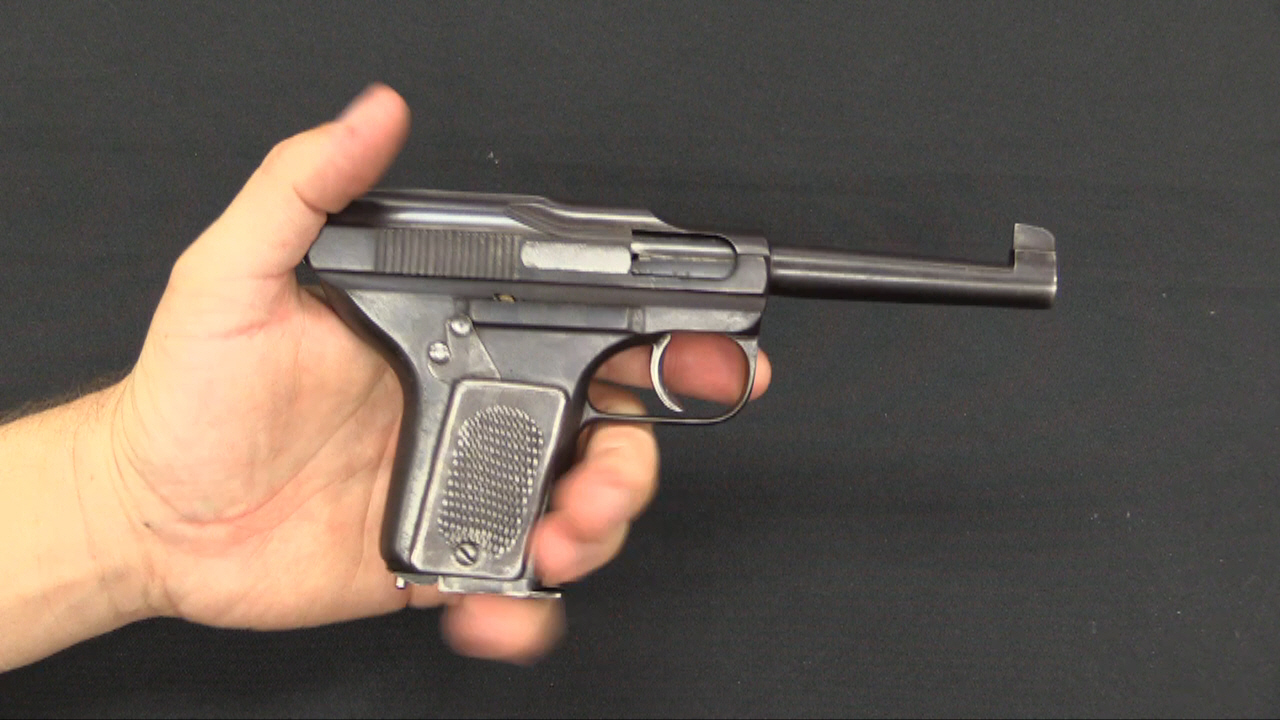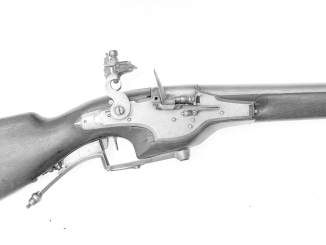After losing out in the 1888 trials, Madsen and Rasmussen continued to refine their rifle. They reduced the overall length and weight, and replaced the feeding clip with a more modern enclosed magazine (although it was still gravity fed, without a spring or follower). The mechanism was refined for more reliable functioning, including changing it to more positively control the position of cartridges as they were fed. The Martini-like rear charging lever was replaced with a more modern rotary handle on the right side of the receiver. Still, the basic mechanism remained the same.
This 1896 Madsen-Rasmussen rifle was again considered by the Danish Military, and deemed reliable enough to limited use. A total of 60 rifles were purchased and issued by the Danish Navy for use in defending coastal fortifications. They were never used in anger, but remained in the Danish inventory until 1932.
With the success of the 1896 model’s sale to the Danish Navy, it was time to expand sales internationally. A company was formed in 1898, which would soon become known as the Danish Recoil Rifle Syndicate, and Madsen and Rasmussen sold their patent rights to it in exchange for royalties on future production. By 1899 the company manager was Lieutenant Jens Schouboe, and it is his name found on the subsequent Madsen LMG patents. For this reason, the Madsen is sometimes referred to as the Schouboe rifle.
In 1903, the US military tested one of the 1896 model rifles (which they identified as a Schouboe) chambered for the new US .30-03 cartridge. This appears to have proved too powerful for the rifle as it was built at the time, although further tests were conducted on the gun in 1905, 1906, 1909, and 1911. The final 1911 report on the rifle listed a number of faults. The arm lacked strenght and durability the report concluded: “It is inferior to our service rifle in accuracy, serviceability, and in rapidity, the competition had become very much keener and each invention showed the results of accumulated experience.”
I am looking for the full text of any of the testing reports, but have not yet found them. It appears that the US testing board saw better things being developed (they were quite fond of the Bang design, which was in its first tests in 1911) and lost interest in trying to perfect the Madsen rifle.
Many thanks to the Tøjhusmuseet (Royal Danish Armory Museum) for letting me have access to these very rare rifles!




Good way to have a top-mounted magazine without offsetting the sights. Offset the magazine instead. The pivoting magazine insertion is similar to the “rock and lock” approach on the AK, but on a different geometric axis. It’s amazing that someone could take the single-shot falling-block action and tinker with it to form the basis for a self-loading (later to be fully automatic) weapon.
“(later to be fully automatic”
One of interesting features of Madsen light-machine gun, was it elasticity in choice of cartridge, does anybody count how many version varying in chambering were made?
Let’s see, about 8 different cartridges overall, including 7.62×51 NATO. Perhaps there are more variants out there…
Looks very complex. One slight note. Audio said Danish Navy bought 50 text says 60.
Looks like the front bushing simply shoves the muzzle cap right off the barrel when you cycle the charging handle to load it — a neat little addition, allowing a simple, sturdy muzzle cap. Whereas if other actions have muzzle caps at all, they must be designed to be shot through / shot off when someone inevitably forgets to remove it.
The Madsen prototype rifles’ top-mounted magazine feed system would later be used on section automatic weapons such as the IJA’s Type 96/99, Bren, Chatellerault, and Mendoza designs.
The Stoner Model-1963 light machine gun was the only American machine gun in the postwar period to use the top-feed system until its replacement by the FN M249 in the post-Vietnam period.
Brazilian military police still used the madsen lmg until a couple years ago.
Where can I find some general statistics about this rifle: overall length, barrel length, weight, muzzle veocity?